In this article, we’ll go through the main stages of growth for jalapeño plants. Each of the various plant stages requires different care. We will touch on the important changes to make for each of the jalapeño plant stages.
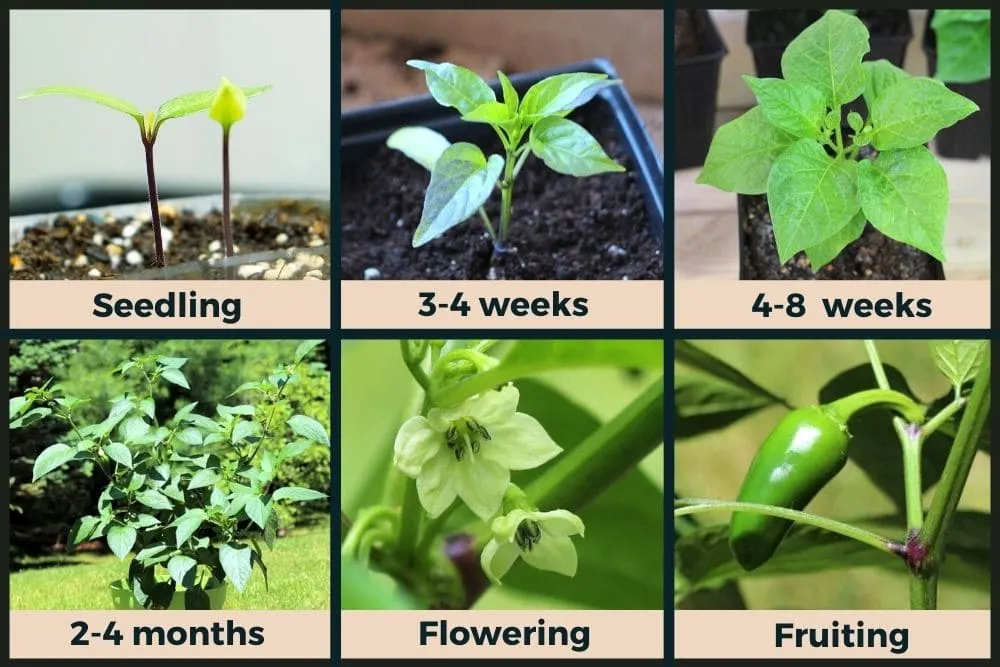
Skip Ahead:
- Stage 1: Seedlings
- Stage 2: Adolescent stage (3-4 weeks)
- Stage 3: Growth stage (4-8 weeks)
- Stage 4: Maturation stage (2-4 months)
- Stage 5: Flowering
- Stage 6: Fruiting
Before we move on, it is important to be aware that timing varies based on growing conditions. For example, jalapeño plants grown in soil will typically grow more slowly than in hydroponics. Similarly, nutrient deficiency, inadequate sunlight, or poor-draining soil can slow plant growth.
For an in-depth guide to growing jalapeños from seed, read our article here.
Learn when to plant jalapeño seeds in your climate here.
Seedling Stage (0-3 weeks)
The first stage of growth for jalapeños is the seedling stage. This lasts from the day of a seed sprouting to about 3 weeks, when true leaves begin to form.
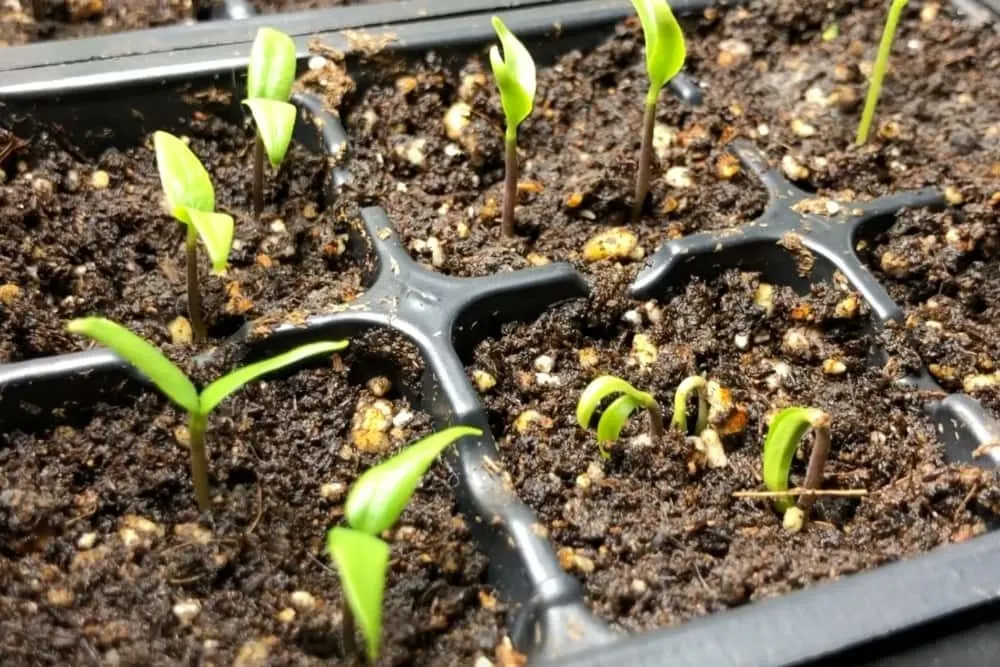
Seedlings are very vulnerable and require close attention and care to ensure a healthy plant in the long run. This includes 16 hours of light per day, even watering, and good airflow.
Note: Most pepper varieties look very similar at this stage, which is why we recommend keeping organized if you’re growing multiple types.
Fertilization can begin around week 1-2 at a reduced strength. We also recommend sprouting your seeds in an organic seed starter mix rather than potting mix. This nutrient-deficient material is ideal for allowing young plant roots to form.
Jalapeño seedling care:
Adolescent Stage (3-4 weeks)
After the seedlings have been alive for a few weeks, they will have developed several sets of ‘true leaves.’ These are the leaves that follow the initial two leaves of the seedling, and are considered to be in ‘true’ form.
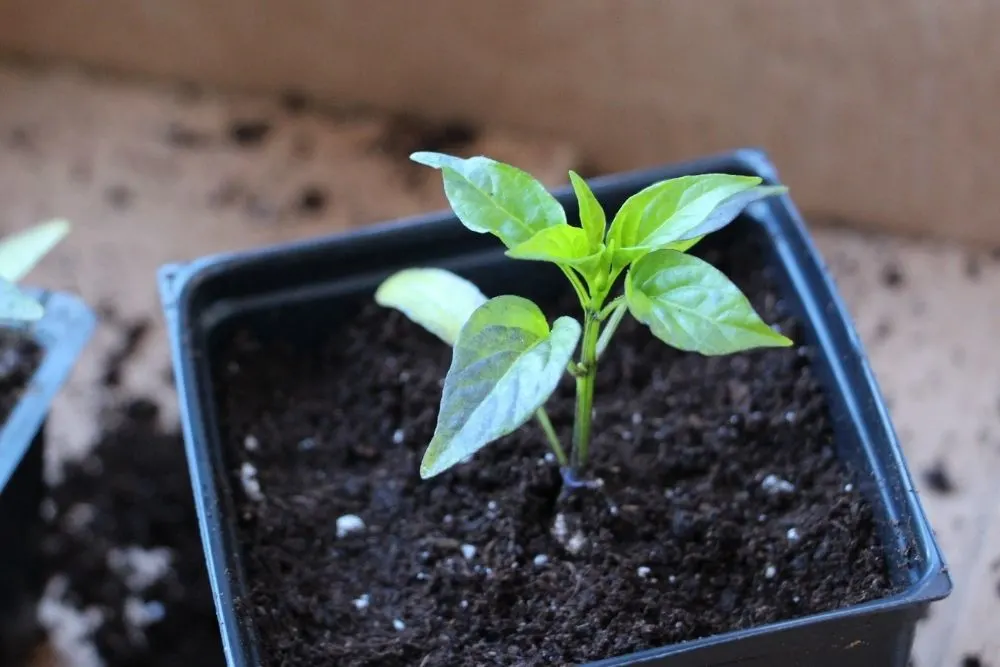
At this stage, jalapeño plants can be transplanted out of seed cell trays and into slightly larger pots with standard potting mix. The plants can handle stronger feeding (either through soil-based nutrients or water-based fertilizer).
Lighting can be kept the same for now at ~16 hours per day. As the plants grow taller and stronger, they will get closer to the lights, absorbing more energy.
Adolescent jalapeno care:
Growth Stage (4-8 weeks)
As the jalapeño plant’s root systems grows, the plant above soil will grow faster and faster. This stage of rapid growth requires consistent watering, fertilizing (if soil does not contain fertilizer), and transplanting.
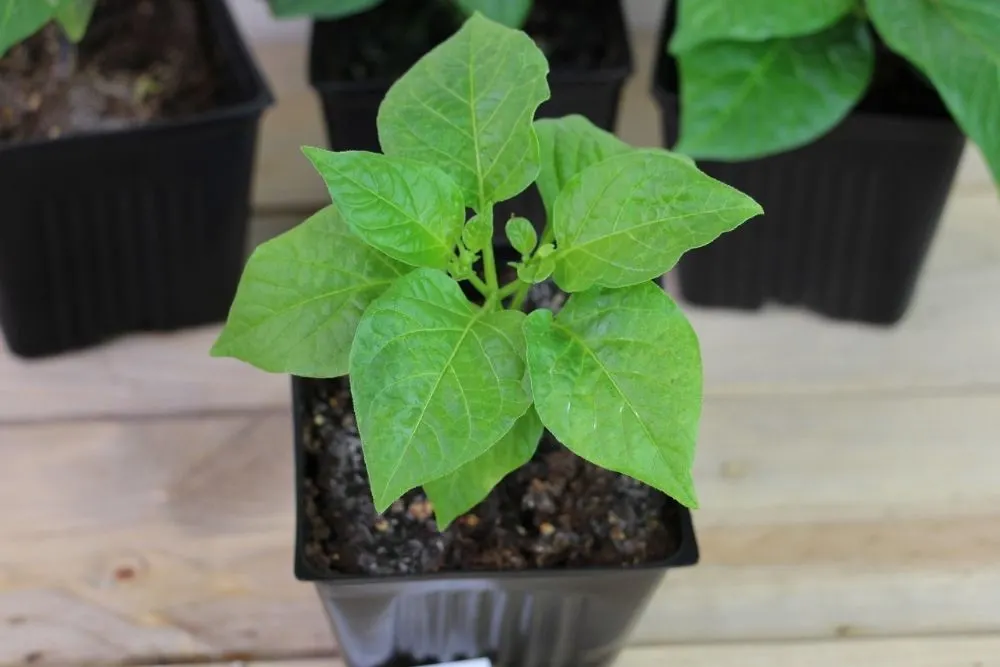
As young jalapeño plants are growing, they need lots of nitrogen for healthy foliage development. A lack of nitrogen could lead to poor growth rate or yellowing leaves that may eventually fall off.
At this time, flowers may begin to form on the plant. This is a sign that the plant needs to be transplanted into a larger pot. Prune flower buds at this stage to encourage more leafy growth.
Learn more about transplanting peppers here.
Jalapeño growth stage care:
Maturation Stage (2-4 months)
After your jalapeño plants have been moved into their final pot or container, they will continue to grow to a mature size. This stage usually involves transitioning (hardening off) the plants to the outdoor environment into full-sun.
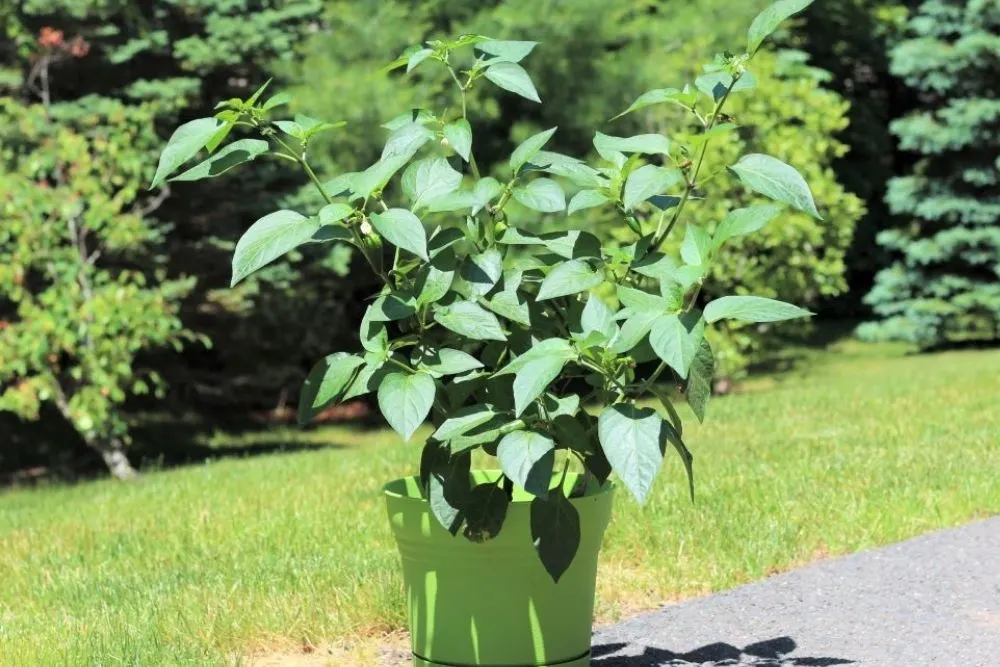
This jalapeño plant stage is important in setting the stage for healthy yields. We want plenty of light and nutrients to allow the plant to grow as efficiently as possible.
Note: Jalapeño plant size can vary drastically based on the size of the container in which they are grown. We recommend pots of at least 3 gallons for the best yields.
Maturing jalapeno plant care:
Flowering Stage
This stage overlaps with the previous stage of maturation. Jalapeño plants should begin to produce flowers after being outdoors for 2-4 weeks. We recommend plucking flowers until this point in time to encourage the plant to produce leaves.
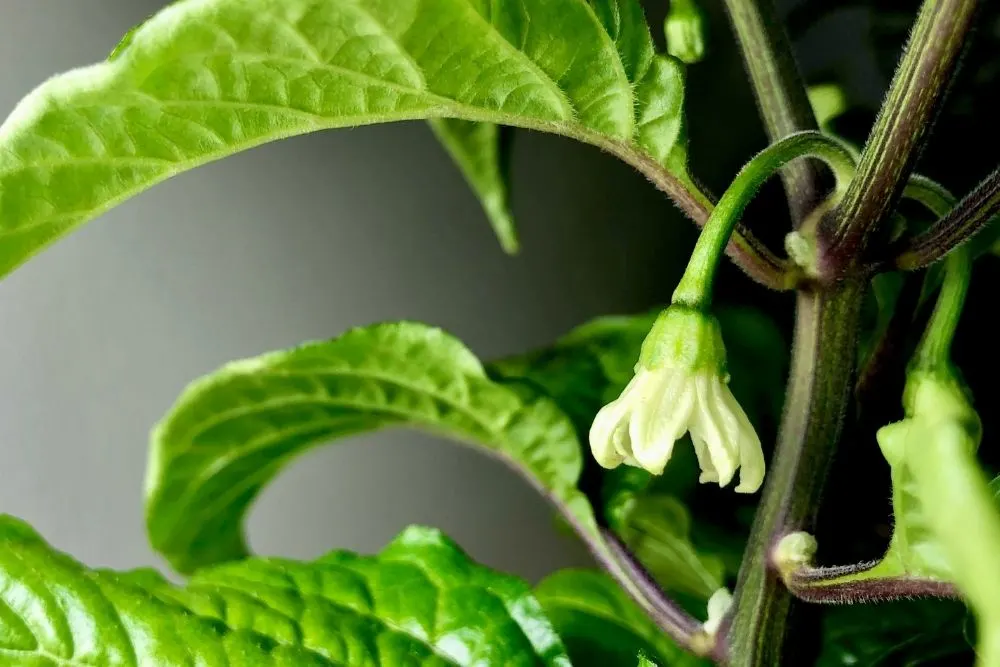
Once your jalapeño plants begin producing flowers, the plants don’t need nearly as much nitrogen. We typically change the type of fertilizer to a more phosphorus-rich blend.
Try Fox Farm’s 3-part liquid fertilizer regimen to keep fertilizing simple. At the flowering stage, you would switch from ‘Grow Big’ to ‘Tiger Bloom.’
Tip: If you are growing indoors, you may need to provide a breeze with a fan or gently shake the plants at this stage to encourage pollination. Jalapeño plants readily self-pollinate outdoors, but indoors they may need some encouragement.
Why are jalapeño flowers dropping off the plant?
This is a common question you may ask at this stage of growth. Some flowers falling off the plant is natural, but it should never be all of them. If your plant is dropping all of its flowers, there may be an environmental issue.
Typically, jalapeno plant flowers drop due to high temperatures, poor pollination, or overwatering. If your plant is not producing any peppers, consider adjusting one of these factors to improve flower pollination and plant productivity.
Jalapeño flowering stage care:
Fruiting
As you probably know, jalapeño plant flowers will eventually turn into peppers. If a flower is successfully fertilized, the flower will drop it’s petals and begin to form a fruit and seeds.
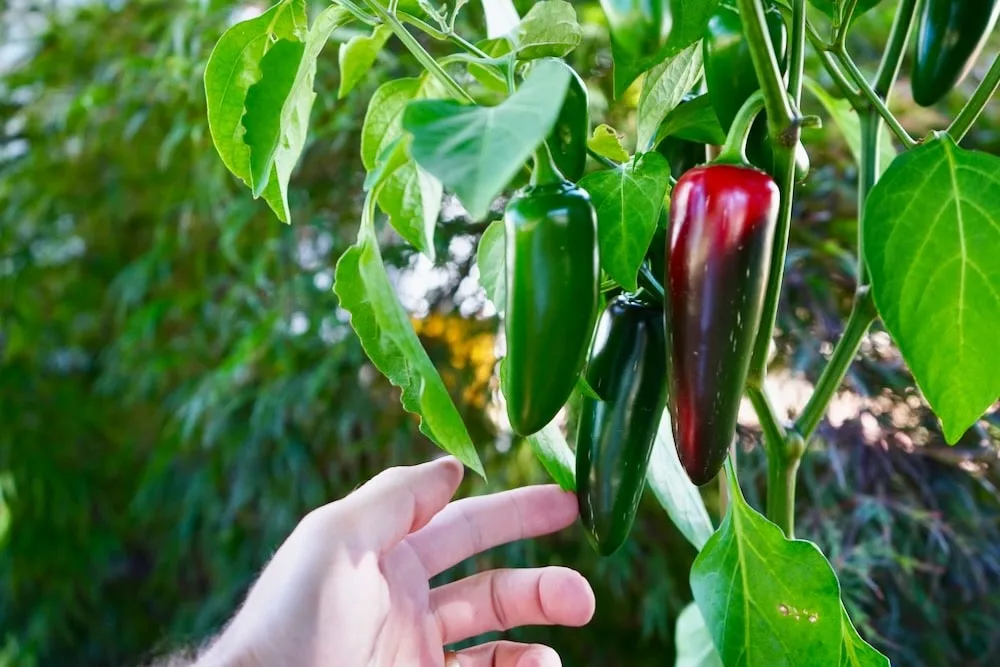
At this stage, it is important not to provide too much nitrogen. Phosphorus becomes more important for big, healthy blooms and fruits.
Jalapeno peppers will ripen from a light green, to a deep green, to almost black, and finally to red. There are other jalapeno varieties that will ripen to other colors, too.
For best results, keep the soil evenly moist and try to avoid overwatering. If the plants are underwatered, they will typically start to wilt. This is not ideal but is preferred to overwatering.
How many jalapeños per plant?
On average, a healthy jalapeño plant will produce around 50 peppers over the course of the year. With a longer growing season, yield can increase to well over 100 peppers per plant!
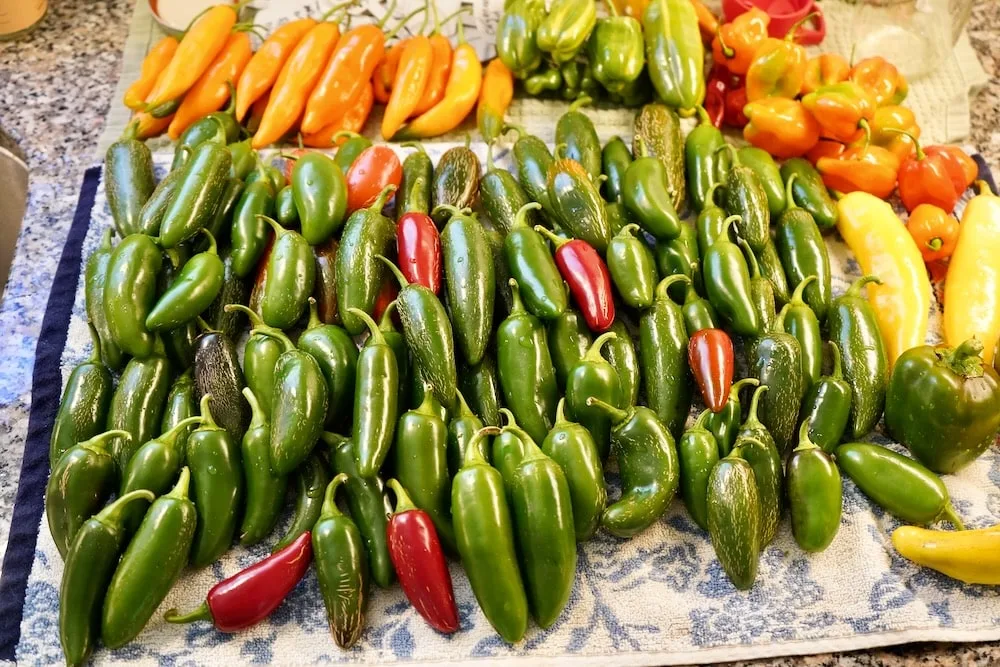
Jalapeño fruiting stage care:
Read Next:
I hope this article helps you understand the life cycle of a jalapeño pepper plant. The jalapeño plant stages are fascinating to witness, all the way from a tiny seedling to a sprawling plant full of peppers. Happy growing!


Jessica
Saturday 9th of September 2023
This was very helpful!! We have been experimenting with our greenhouse and our jalapeño plants have huge leaves and are falling over, more like a vine than a plant like we see in pictures, so we were told that our plants are actually beans by a website that you snap a picture of a leaf and is usually pretty accurate. After seeing and reading this, we are confident that our pepper plants are just growing large because they have more space than they actually need, heat with fans, a great soil mixture and lighting. Thank you for listing so much detail, pictures and the separate stages!!
Kelly
Thursday 20th of April 2023
Great article- thank you! I got my seedlings mixed up and I can’t tell what is shisito and what I’d jalapeño at the seedling stage. I did a sliced and canned honey pickle on my jalapeños last year and they were a hit as gifts.
peppergeek
Wednesday 26th of April 2023
Sounds delicious! Yep, they look pretty much the same until they start to form fruits.
Raymonr
Tuesday 3rd of January 2023
I planted my jalapeno, serano, cilantro and Peppermint about 3 weeks ago now as the pepper plants have true leaves now. The cilantro is still alive after having lots of growth at first but then i over watered and the soil ended up covering most of the plant causing it to mostly diminish. The mint plant seems to only be in seedling stage. My question is clean considering that i planted three weeks ago, and it's January now and they are outside, but i live in Scottsdale, Arizona are there any recommendations you can give me to help my plants out during these colder than ideal temperature with rain. I did get a grow light that i keep on them for as long as I can everyday it helps dry up the soil after heavy rain.
Adejumo Nasiru
Sunday 30th of October 2022
Thánks
Patrick McNees
Monday 12th of September 2022
I live in S. Florida. I grow my plants from seed in 5 gallon buckets with a cage and netting to dissuade the ravenous iguana population from destroying them. My last 2 plants got chowed on down to the point of being 2 bare stems. I nurtured them back to leafy, flower spouting 'shrubs'. My only problem is leaf curl on one of the plants. Note: I have 2 plants in one bucket. Is it too late to seperate them? Should I prune all of the first flowers which now are growing throughout the plants?